Romania has the highest cervical cancer incidence and mortality rate in the European Union, Dr Alexandra Hosszu explains, when asked why the country is the focus of the ReThink HPV Vaccination project. ‘Every five hours, a Romanian woman in the 20 to 50 age group dies of cervical cancer.’
As most cervical cancers are caused by human papillomaviruses (HPV), HPV vaccination is a key part of the solution. But there’s a problem: ‘Vaccine confidence has decreased in Romania after the pandemic – a trend observed in the majority of EU countries,’ Dr Hosszu says. ‘It has also been proven that people who are more prone to believe in misleading narratives about vaccines have a high level of social media consumption.’
That’s why ReThinkHPV has been working to tackle online misinformation and improve communication skills in Central and Eastern Europe. The EU-funded project uses social innovation and targeted interventions based on the behavioural determinants of health, says Dr Hosszu, a sociologist.
‘The main goal is to support EU Member States and accession countries to rethink and restart their HPV vaccination campaigns,’ she says, ‘and to take a step closer to achieving Europe’s Beating Cancer Plan and Cancer Mission objectives on HPV vaccination and cancer prevention.’
To assess the scale of the challenge, researchers conducted a national survey in Romania, asking about knowledge of HPV and attitudes to HPV vaccination.
Key findings
- Most respondents (79%) had heard about HPV infection.
- Half of the Romanian population is either very or not at all informed about HPV, while 28% feel rather or very informed.
- HPV vaccination is considered rather safe or very safe by 57% of respondents.
- A slim majority of respondents (54%) says that HPV vaccines should be mandatory
- In terms of trusted sources of health information, doctors are the top choice of respondents, followed by family members and specialist websites.
- Of those who have children, 9 out of 10 respondents vaccinated their child according to the compulsory vaccination scheme.

To find out more about ReThink HPV, Vaccines Today interviewed Dr Hosszu. First, we asked whether HPV vaccination for boys is widely available in Romania.
Dr Hosszu: The possibility of vaccinating boys against HPV is relatively new, and awareness remains limited. Romania’s HPV vaccination programme, starting in 2024, includes both girls and boys aged 11 to 18. County reports on HPV perception reveal that 57% of residents in Argeș and 54% in Vrancea were unaware that boys can also be vaccinated.
What role has misinformation played in vaccine hesitancy?
Dr Hosszu: Trust and social capital have long been declining in Europe, including Romania. Fake news and disinformation have accentuated these dangerous trends, enhancing collective vulnerabilities. Digitalization and social media platforms contribute to the increase of polarization and social distance between various groups, and this is why it is more important than ever to understand the interdependencies between current and older threats.
What can be done to address this?
Dr Hosszu: The Renasterea Foundation successfully implemented a social media campaign aimed at promoting HPV vaccination in Argeș and Vrancea counties, Romania. This initiative targeted increased public awareness of HPV vaccination’s benefits, encouraged engagement within the community, and inspired individuals to take action – such as seeking further information or participating in vaccination programmes.

The HPV vaccination awareness campaign faced several challenges, particularly in managing public perception and addressing misinformation. The comment section on social media provided insights into the resistance, skepticism, and misinformation that circulated among certain segments of the population. Another recurring theme in the comments was a deep mistrust in the healthcare system and government policies.
Tell us about the guide to combat fake news?
Dr Hosszu: The purpose of this guide is to provide accurate information about the HPV virus and the benefits of vaccination against it. It explores the risks associated with HPV infection, the importance of vaccination prevention, and the common myths surrounding them. The guide is available both in Romanian and English and it was disseminated at local level to social and health professionals.
How has the project supported healthcare professionals?
Dr Hosszu: We conducted training sessions between September and October 2024, providing a total of twelve workshops aimed at enhancing the knowledge and skills of healthcare and social practitioners. The workshops focused on key topics related to HPV vaccination, such as understanding the burden of HPV-related infections, effective communication strategies, and dispelling myths surrounding vaccination.
These workshops were held in collaboration with regional public health departments and other institutional partners, ensuring broad reach and impact. A total of 339 individuals participated, with a significant majority of 305 women and only 34 men.
Did the training have an impact?
Dr Hosszu: Participants showed a clear improvement in their knowledge after the training sessions. Initially, they had only a moderate understanding of HPV-related topics, but their confidence grew significantly afterward.
The biggest improvement was in awareness of the HPV vaccination process in Romania, followed by a better understanding of possible side effects, which helped dispel myths and concerns. Participants also gained more insight into the cervical cancer patient pathway.
How will this help address vaccine uptake?
Dr Hosszu: Prior to the sessions, 81% of participants were willing to recommend HPV vaccination, a number that increased to 92% afterwards.
Also, the training significantly enhanced participants’ preparedness to address common barriers to vaccination. The percentage of participants who felt equipped to counter myths and skepticism increased from 61% to 87%, while those who believed they had strong communication skills to promote vaccination increased from 56% to 80%.
Moreover, the participants’ trust in HPV vaccines improved from 57% (before the programme) to 89% after the workshops.
What is the HPV communication matrix and how could it be used?
Dr Hosszu: At the heart of the ReThinkHPVaccination project is the aim to change the communication strategies used for explaining the HPV vaccination narrative in Central and Eastern European Countries, based on understanding on how the decision to get vaccinated forms in one of the biggest countries in the region – Romania. This new communication model is encompassed in HPV vaccination personalised communication Matrix.
To ensure efficacy, the interventions should be carried at multiple levels – micro, meso and macro, with involvement of key opinion leaders from each group that impacts the HPV vaccination course. The main groups include health professionals, school doctors and psychologists, community health assistants, regional health workers, teachers, parents and NGOs.
Briefly, what future plans do you have to build on the work of ReThink HPV?
Dr Hosszu: We plan to further strengthen efforts to increase HPV vaccination rates in Romania and across Europe through a comprehensive approach. This includes expanding social media campaigns to raise awareness and combat misinformation; providing training for health and social workers to enhance their role in vaccination education; advocating at national and local levels to influence policies and improve vaccine accessibility.




Pingback
March 31st, 2025
[…] Sumber Asli: http://www.vaccinestoday.eu […]